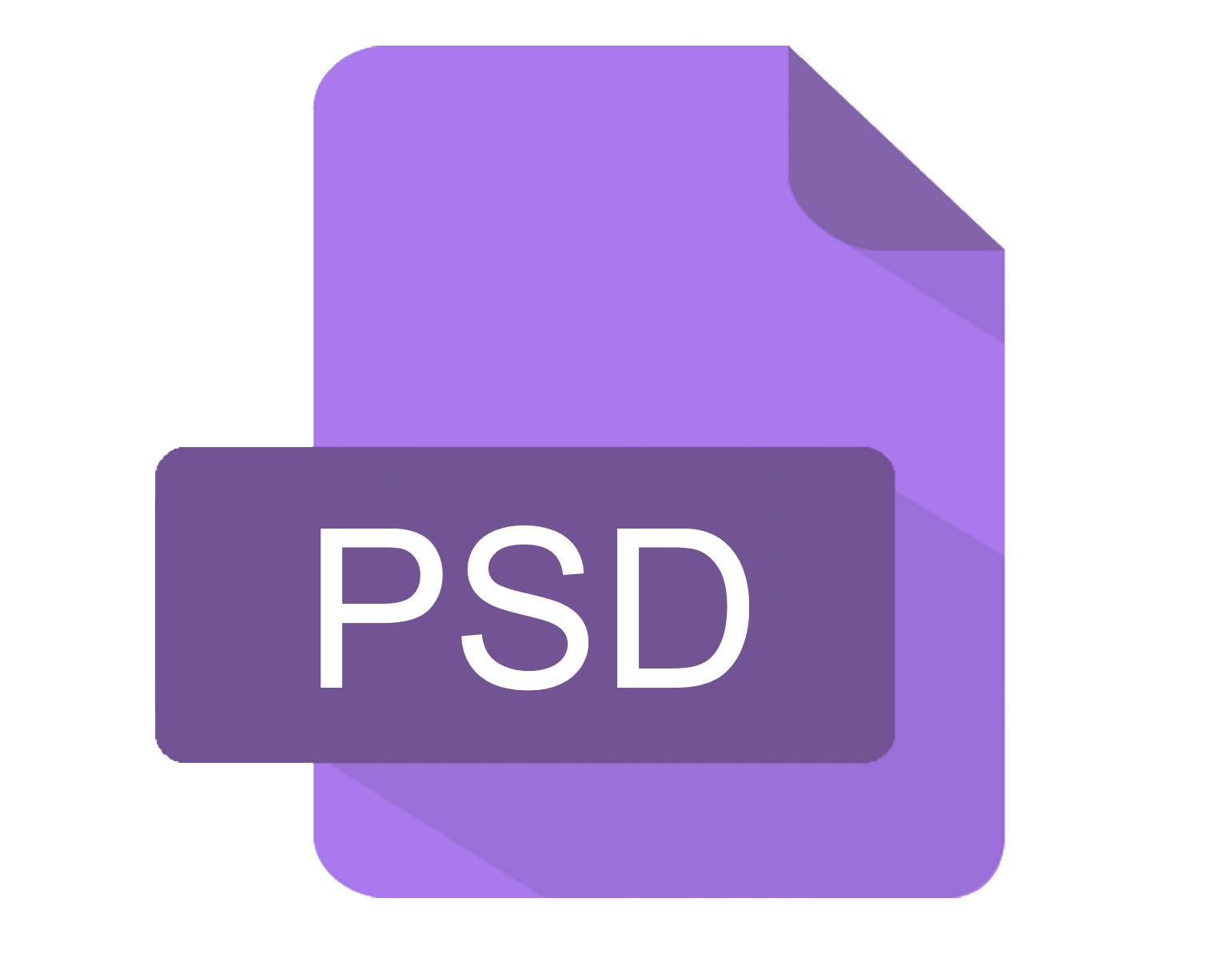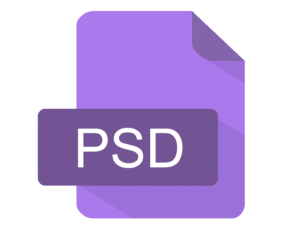What is PSD?
PSD is an image format used by Adobe. The software which has its own format is used by many people for graphic designing and image editing.
A PSD file contains multiple objects including images, shapes, text, filters and other objects often used in graphic designing/editing. This allows Photoshop users to save, transfer and make further changes to their work in the future.
The file name extension for PSD files is: .psd
Here are some other questions about PSD you might also want to ask. If you have any other questions, please feel free to contact us and we will try to answer.
What does PSD mean?
PSD stands for "Photoshop Document“. This is a document file extension in an image format. PSD is native to Adobe Photoshop and is especially advantageous for image files with multiple layers as it maintains a high quality whilst being compressed in a lossless format to reduce the file size.
What are PSD Files used for?
PSD files, or Photoshop Documents, are the native file format of Adobe Photoshop used primarily for working with complex, layered images.
They retain multiple layers, masks, effects, text, and editing information, making them ideal for non-destructive editing and intricate image manipulation by designers and artists.
Some of their uses cases may included:
- Graphic design projects that require multiple layers and effects for detailed editing.
- Photo editing and retouching with non-destructive adjustments to layers and masks.
- Web development layouts where designs are created and sliced into smaller images for web pages.
- Creating marketing materials like posters, flyers, and digital advertisements with editable components.
- Storing working drafts and versions of complex designs allowing iterative edits over time.
- Designing logos, icons, and other scalable graphics using smart objects to avoid quality loss.
- Multimedia production that benefits from layering text, pixel-based images, vector paths, and effects in a single file.
What is the difference between PSD and PNG?
Both PNG (portable network graphics) and PSD benefit from lossless compression so they are both high-quality image files. PSD (Photoshop Document) has multiple layers that can be edited but PNG files are flat.
PSD files tend to be much larger so converting PSD to PNG is ideal for retaining image quality whilst making the size of the file smaller.
| Feature | PSD | PNG |
|---|---|---|
| File Type | Proprietary Photoshop Document format, supports layers and edits | Raster image format, lossless compression for flat images |
| Layer Support | Supports multiple editable layers, masks, and effects | No layer support; stores a single flattened image |
| Transparency | Supports transparency within layers and masks | Supports transparency with alpha channel |
| File Size | Generally much larger due to layers and editable content | Smaller file size for flattened images with lossless compression |
| Usage | Used for editable design work, photo editing, and graphic projects | Ideal for web images, icons, and graphics requiring transparency |
How to read this file type in Java?
Our JDeli library allows you to read PSD files. Other than PSD support, JDeli also offers support for a range of image formats which you can learn more about on our support site. JDeli is the best pure Java image library for performance and efficiency.
Are you a Java Developer working with Image files?
// Read an image
BufferedImage bufferedImage = JDeli.read(avifImageFile);
// Write an image
JDeli.write(bufferedImage, "avif", outputStreamOrFile);// Read an image
BufferedImage bufferedImage = JDeli.read(dicomImageFile);// Read an image
BufferedImage bufferedImage = JDeli.read(heicImageFile);
// Write an image
JDeli.write(bufferedImage, "heic", outputStreamOrFile);// Read an image
BufferedImage bufferedImage = JDeli.read(jpegImageFile);
// Write an image
JDeli.write(bufferedImage, "jpeg", outputStreamOrFile);
// Read an image
BufferedImage bufferedImage = JDeli.read(jpeg2000ImageFile);
// Write an image
JDeli.write(bufferedImage, "jpx", outputStreamOrFile);
// Write an image
JDeli.write(bufferedImage, "pdf", outputStreamOrFile);
// Read an image
BufferedImage bufferedImage = JDeli.read(pngImageFile);
// Write an image
JDeli.write(bufferedImage, "png", outputStreamOrFile);
// Read an image
BufferedImage bufferedImage = JDeli.read(tiffImageFile);
// Write an image
JDeli.write(bufferedImage, "tiff", outputStreamOrFile);
// Read an image
BufferedImage bufferedImage = JDeli.read(webpImageFile);
// Write an image
JDeli.write(bufferedImage, "webp", outputStreamOrFile);
What is JDeli?
JDeli is a commercial Java Image library that is used to read, write, convert, manipulate and process many different image formats.
Why use JDeli?
To handle many well known formats such as JPEG, PNG, TIFF as well as newer formats like AVIF, HEIC and JPEG XL in java with no calls to any external system or third party library.
What licenses are available?
We have 3 licenses available:
Server for on premises and cloud servers, Distribution for use in a named end user applications, and Custom for more demanding requirements.
How does JDeli compare?
We work hard to make sure JDeli performance is better than or similar to other java image libraries. Check out our benchmarks to see just how well JDeli performs.

